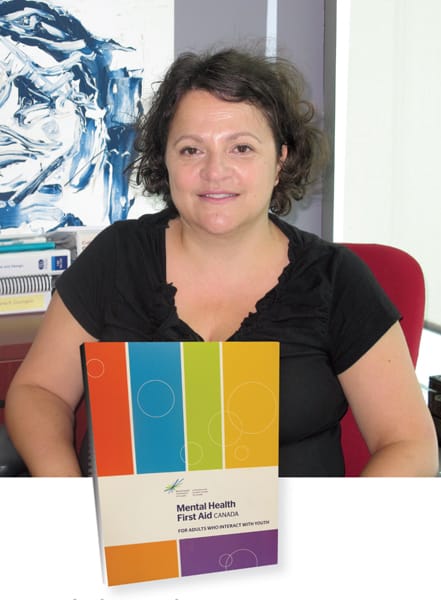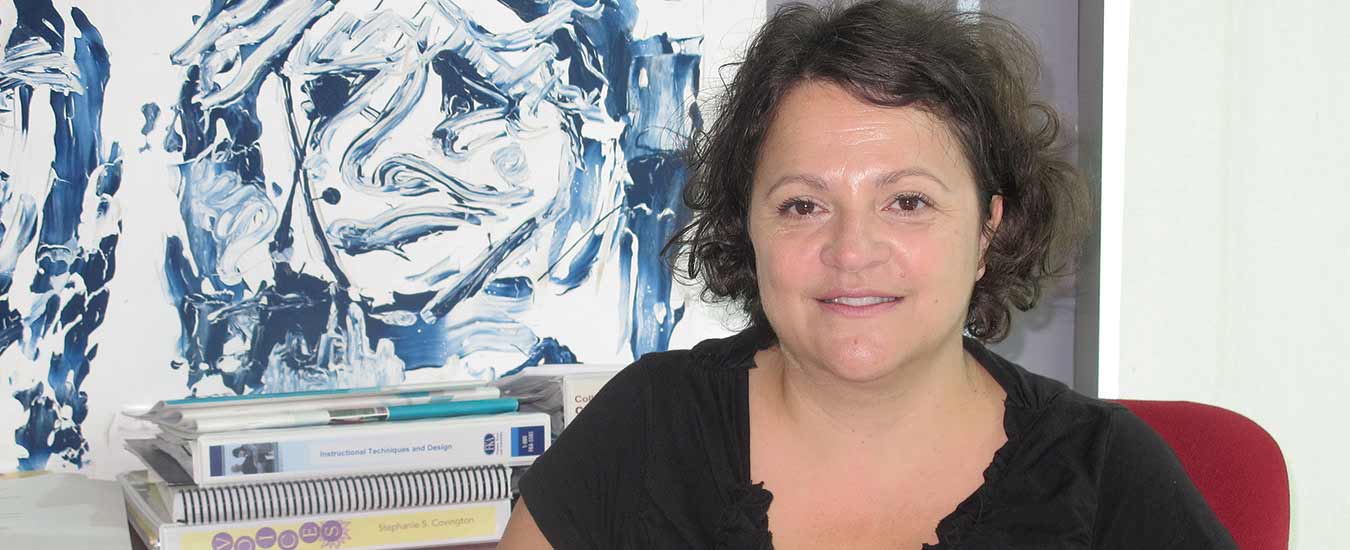"One in five people in Canada lives with a mental illness," according to the Mental Health Commission of Canada. That’s 6.7 million people; one million of these are children aged nine to 19.
We all know someone in our circle of family and friends who has had a mental illness; we may have been treated for a mental illness ourselves or tried to cope with symptoms without treatment. If mental health issues are so common, why is there still a stigma, a cringe or a squirm at the mention of mental health?
Learning to recognise and respond in a mental health crisis
"One in five people in Canada lives with a mental illness," according to the Mental Health Commission of Canada. That’s 6.7 million people; one million of these are children aged nine to 19. We all know someone in our circle of family and friends who has had a mental illness; we may have been treated for a mental illness ourselves or tried to cope with symptoms without treatment. If mental health issues are so common, why is there still a stigma, a cringe or a squirm at the mention of mental health?
"It’s a combination of a lack of information and the presence of misinformation about the root causes of mental illness," says Monique Yazbek, co-ordinator Mental Health and Wellness, Primary Health at the IWK Health Centre in Halifax—and a mental health first aid instructor. Yazbek says people generally don’t understand mental health issues and are influenced by media or TV portrayals of mentally ill people.
Mental illnesses vary greatly. “In younger people, we hear about anxiety disorders, depression, substance abuse, eating disorders, as well as psychotic illnesses like schizophrenia, which is rarer,” says Yazbek. The common link in all these illnesses is that the illness affects how the brain functions.
We tend to hesitate when it comes to helping someone with a mental illness. We may sense there is something wrong, but we don’t know what to do, or fear we may do something to make matters worse. So we do nothing. “When someone needs help, that’s not how we want you to respond,” says Yazbek.

Training prepares you to act
Mental health first aid teaches people the skills needed to help when a person is experiencing a mental health crisis. It teaches how to recognize the signs and symptoms, how to provide initial help and how to guide the person to the community mental health resources and professional help. Much like physical first aid courses, it prepares the person first on the scene to act.
Physical first aiders may stop bleeding, call 911, ensure the person’s safety, perform CPR, or just talk calmly to the person till summoned help arrives. Mental health first aiders recognize the crisis situation and act as they have learned to calm the person and direct them to available help. In training, role playing prepares mental health first aiders for a range of situations.
“The first thing you do in a mental health crisis is to speak calmly and listen to the person. Get them to sit down and take a few breaths. We all function a little better when we are calm,” says Yazbek. It also helps in times of crisis to know that you are not alone, that someone is looking out for you when you may not be in the state of mind to think clearly.
There are two different mental health first aid courses: one designed for adults who work with youth, the one Yazbek teaches; and one designed for adults who work with adults. Anyone can take the courses. Yazbek’s taught grandmothers, teachers, pharmacists, pastors, interested citizens, students, people who know people in their family who have mental health issues and want to know how to help, and people who struggle with mental health issues and want to learn how to help themselves.
Early identification crucial for youth
The course aimed at youth is crucial in identifying issues and dealing with them early. “Most of the mental illnesses that we deal with tend to start in the early teens to early 20s, things like anxiety, depression and substance abuse. Early identification increases the chances of successful treatment,” Yazbek says. Patterns and behaviours learned over 30 years may be difficult to change. “However, when you have a young person you can teach them the skills they need to cope effectively with mental health issues. There are things you can do to change how the brain functions. So it is really important to catch them early.”
Yazbek says to approach a person who seems more down, who is isolating themselves from other people, not hanging out with family as much. Tell them you have noticed a change and you are concerned. She says you may get told to get lost or the more colourful equivalent, but in her experience, the young person will often be relieved to talk about how they feel. “The armour drops,” she says.
The course will not teach you to be a therapist any more than the physical first aid course will teach you to be a doctor, but it will help you to understand mental illness and make you aware of the resources in your community. The family doctor is often the first person you should see with a mental health concern. He or she can direct you to the appropriate treatment, which could be counselling by a mental health clinician. There are also organizations in the community, such as the Self-Help Connection and the Canadian Mental Health Association, that provide information.
Mental health first aid began in Australia and has been offered in Canada since 2007. The course for adults working with youth is 14 hours in duration with instruction delivered during four afternoons in three and a half hour blocks each week through the Dartmouth and Chebucto Community Health Teams s. Topics cover substance-related disorders, mood disorders, deliberate self injury, anxiety disorders, eating disorders, psychotic disorders and mental health resources in the community. The course for adults working with adults is 12 hours long. Interestingly, demand is high with classes filling quickly.
Yazbek says, “Once you understand what mental health issues are, you are less likely to look at people with mental health issues any differently than you would look at a person with any other illness.”
